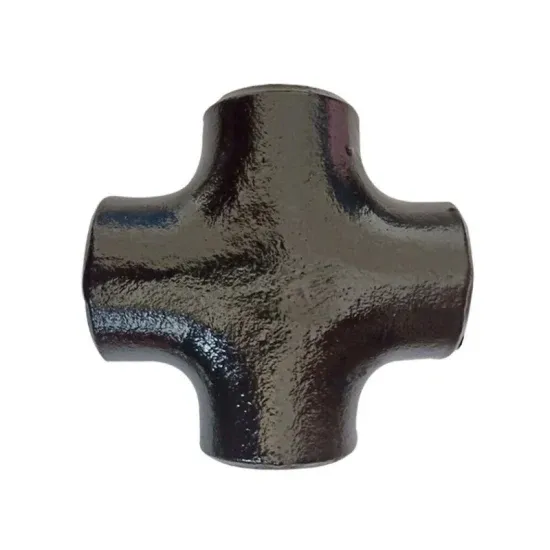-
Cangzhou Yulong Steel Co., Ltd.
-
Phone:
+86 13303177267 -
Email:
admin@ylsteelfittings.com
- English
- Arabic
- Italian
- Spanish
- Portuguese
- German
- kazakh
- Persian
- Greek
- French
- Russian
- Polish
- Thai
- Indonesian
- Vietnamese
- Zulu
- Korean
- Uzbek
- Hindi
- Serbian
- Malay
- Ukrainian
- Gujarati
- Haitian Creole
- hausa
- hawaiian
- Hebrew
- Miao
- Hungarian
- Icelandic
- igbo
- irish
- Japanese
- Javanese
- Kannada
- Khmer
- Rwandese
- Afrikaans
- Albanian
- Amharic
- Armenian
- Azerbaijani
- Basque
- Belarusian
- Bengali
- Bosnian
- Bulgarian
- Catalan
- Cebuano
- China
- China (Taiwan)
- Corsican
- Croatian
- Czech
- Danish
- Esperanto
- Estonian
- Finnish
- Frisian
- Galician
- Georgian
- Kurdish
- Kyrgyz
- Lao
- Latin
- Latvian
- Lithuanian
- Luxembourgish
- Macedonian
- Malgashi
- Malayalam
- Maltese
- Maori
- Marathi
- Mongolian
- Myanmar
- Nepali
- Norwegian
- Norwegian
- Occitan
- Pashto
- Dutch
- Punjabi
- Romanian
- Samoan
- Scottish Gaelic
- Sesotho
- Shona
- Sindhi
- Sinhala
- Slovak
- Slovenian
- Somali
- Sundanese
- Swahili
- Swedish
- Tagalog
- Tajik
- Tamil
- Tatar
- Telugu
- Turkish
- Turkmen
- Urdu
- Uighur
- Welsh
- Bantu
- Yiddish
- Yoruba

Nov . 08, 2024 11:43 Back to list
DIN 2527 PN10 Flange Size Specifications and Design Details
Understanding DIN 2527 PN10 Flange Dimensions
Flanges play a crucial role in connecting different pipes, valves, pumps, and other equipment in a piping system. Among the various standards used globally, DIN (Deutsches Institut für Normung) provides specifications for dimensions, tolerances, materials, and testing methods for flanges. One such specification is the DIN 2527 standard for PN10 flanges. This article will delve into the essential characteristics and dimensions of DIN 2527 PN10 flanges, highlighting their significance in industrial applications.
What is DIN 2527 PN10 Flange?
DIN 2527 is a standard that outlines the dimensions and requirements for circular flanges used in pipeline systems. The “PN” stands for “Pressure Nominal,” which indicates the pressure rating of the flange. In the case of PN10, it signifies that the flange is designed for a maximum allowable pressure of 10 bar (approximately 145 psi) at a given temperature. This standard is widely utilized in industries such as water treatment, oil and gas, and chemical processing due to its reliability and compatibility with various piping systems.
Dimensions of DIN 2527 PN10 Flanges
DIN 2527 flanges come in various sizes, catering to different application needs. The dimensions of these flanges encompass several key factors, including diameter, thickness, and bolt hole specifications. Below is a summary of the most crucial dimensions
1. Nominal Diameter (DN) The nominal diameter of the flange is essential for defining the pipe size it connects to. DIN 2527 flanges are available in multiple nominal diameters, which range typically from DN 40 to DN 2000. The sizes correlate with the internal diameter of the mating pipe.
2. Flange Thickness The thickness of a DIN 2527 PN10 flange varies depending on its nominal diameter. As the diameter increases, so does the thickness to ensure structural integrity under pressure. Typically, the thickness values range from around 10 mm for smaller diameters to upwards of 40 mm for larger ones.
3. Bolt Hole Specifications The number and diameter of bolt holes on a flange are critical for ensuring a secure connection between the two mating flanges. DIN 2527 flanges typically have four, six, or eight bolt holes, with diameters that vary based on the nominal size of the flange. Standardized hole sizes facilitate compatibility with various bolting systems.
din 2527 pn10 flange dimensions

4. Outer Diameter (OD) The outer diameter of the flange is another vital dimension. It varies correspondingly with the nominal diameter and is designed to accommodate different piping configurations. The outer diameters typically range from approximately 120 mm for DN 40 to about 2000 mm for much larger sizes.
5. Bolt Circle Diameter (BCD) The bolt circle diameter corresponds to the circle's diameter formed by the center of the bolt holes. This dimension is critical for ensuring alignment and proper engagement of the bolts, affecting the overall integrity of the bolted connection.
Materials and Coatings
DIN 2527 PN10 flanges are manufactured using various materials to suit different operational environments. Common materials include carbon steel, stainless steel, and ductile iron, each offering unique mechanical properties and resistance to corrosion. Depending on the application, flanges may also be coated with protective layers to enhance durability and resistance to environmental factors.
Applications of DIN 2527 PN10 Flanges
The versatility and robustness of DIN 2527 PN10 flanges make them suitable for a wide array of applications. They are commonly used in water distribution systems, wastewater treatment plants, and in industrial pipelines that transport fluids and gases. Their ease of installation and maintenance further contributes to their popularity across various sectors.
Conclusion
In summary, the DIN 2527 PN10 flanges represent a vital component in piping systems, facilitating efficient and secure connections between different elements. With standardized dimensions and compatibility with a range of materials, these flanges are indispensable in numerous industrial applications. Understanding the specifications, dimensions, and materials of DIN 2527 PN10 flanges ensures that engineers and technicians can make informed decisions when designing and maintaining piping systems. This knowledge ultimately contributes to better efficiency, safety, and reliability in various operational contexts.
Latest news
-
ANSI 150P SS304 SO FLANGE
NewsFeb.14,2025
-
ASTM A333GR6 STEEL PIPE
NewsJan.20,2025
-
ANSI B16.5 WELDING NECK FLANGE
NewsJan.15,2026
-
ANSI B16.5 SLIP-ON FLANGE
NewsApr.19,2024
-
SABS 1123 FLANGE
NewsJan.15,2025
-
DIN86044 PLATE FLANGE
NewsApr.19,2024
-
DIN2527 BLIND FLANGE
NewsApr.12,2024
-
JIS B2311 Butt-Welding Fittings LR/SR 45°/90° /180°Seamless/Weld
NewsApr.23,2024











